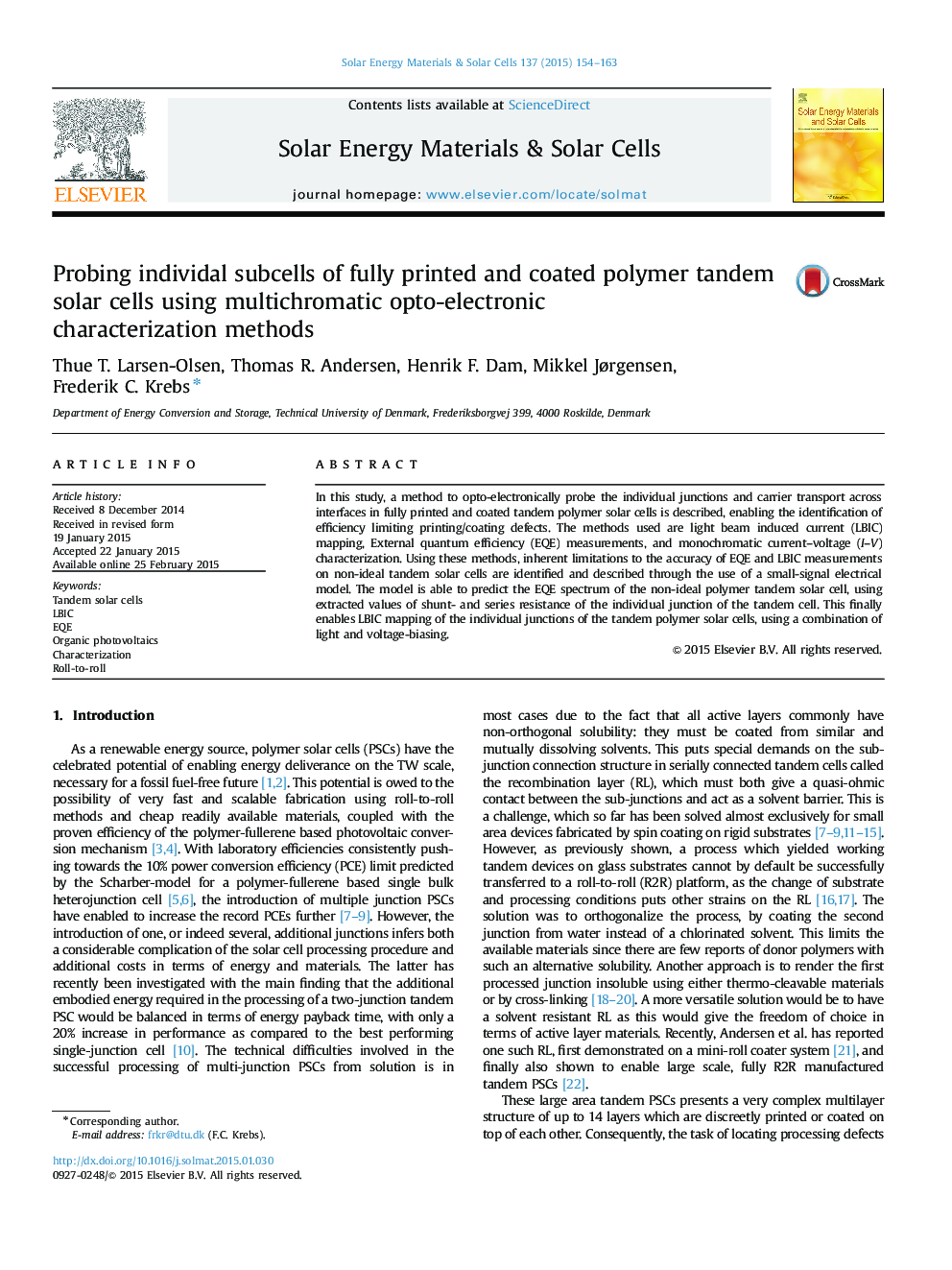| Article ID | Journal | Published Year | Pages | File Type |
|---|---|---|---|---|
| 77862 | Solar Energy Materials and Solar Cells | 2015 | 10 Pages |
•Opto-electronic probing of the individual junctions and interfaces in fully printed tandem polymer solar cells.•Combination of voltage and light biasing enables 2D LBIC characterization of individual subcells.•Identification of efficiency limiting printing and coating defects in individual tandem subcells.•Inherent limitations to the accuracy of LBIC and EQE on tandem solar cells are identified.•Discussion on the basis of a small signal electrical model.
In this study, a method to opto-electronically probe the individual junctions and carrier transport across interfaces in fully printed and coated tandem polymer solar cells is described, enabling the identification of efficiency limiting printing/coating defects. The methods used are light beam induced current (LBIC) mapping, External quantum efficiency (EQE) measurements, and monochromatic current–voltage (I–V) characterization. Using these methods, inherent limitations to the accuracy of EQE and LBIC measurements on non-ideal tandem solar cells are identified and described through the use of a small-signal electrical model. The model is able to predict the EQE spectrum of the non-ideal polymer tandem solar cell, using extracted values of shunt- and series resistance of the individual junction of the tandem cell. This finally enables LBIC mapping of the individual junctions of the tandem polymer solar cells, using a combination of light and voltage-biasing.
Graphical abstractFigure optionsDownload full-size imageDownload as PowerPoint slide
